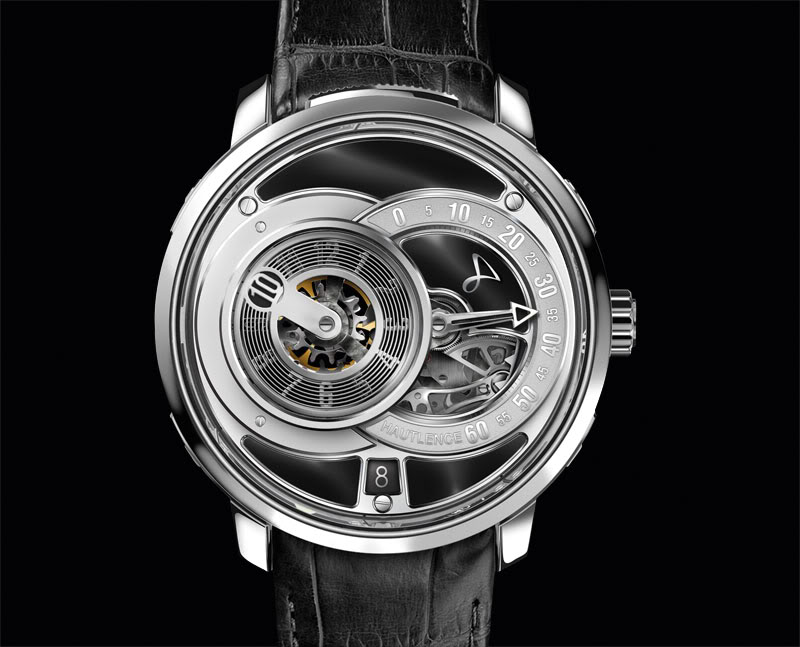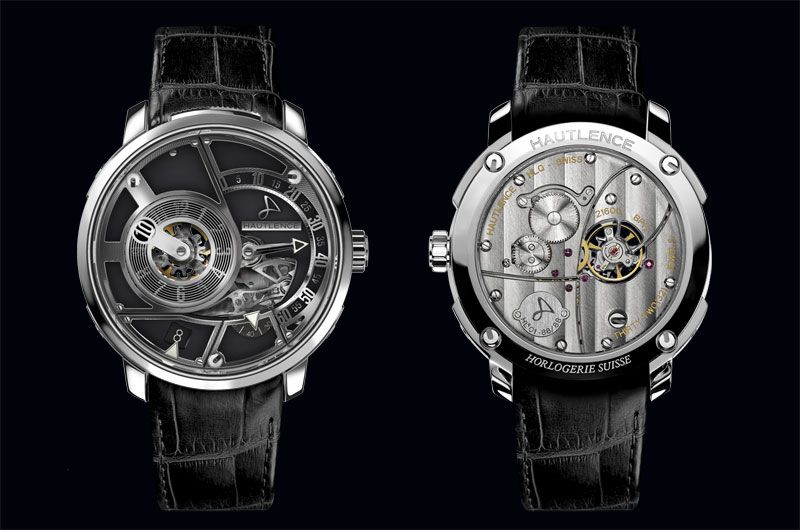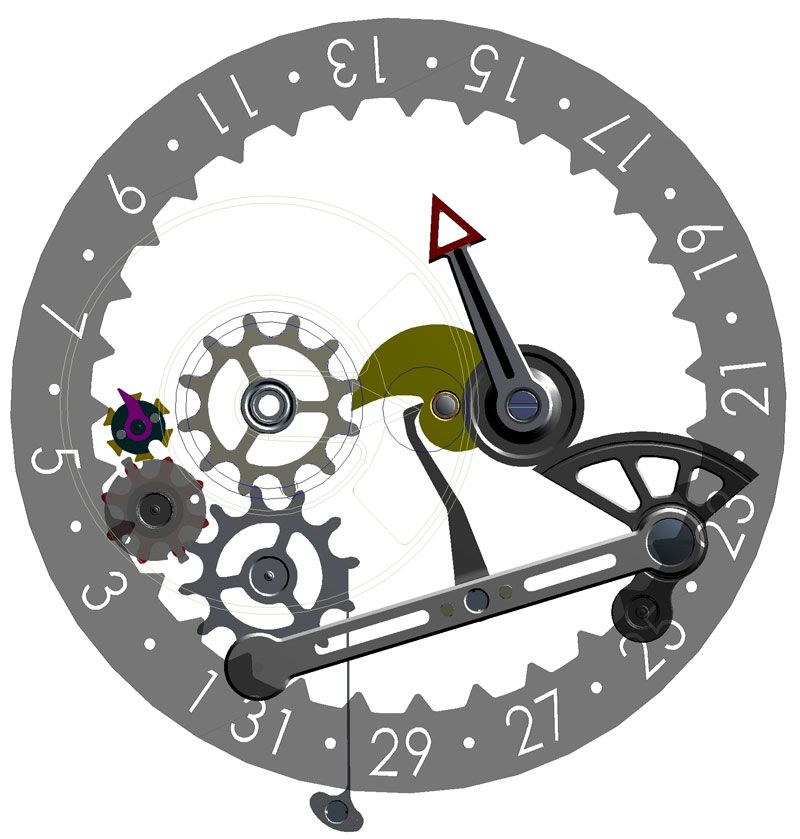Hautlence HLq and HLq Classic explained

Recently Hautlence was so kind to lend me a watch for review purposes. One of the most obvious things about every Hautlence, is the way it displays time. Many people wondered how the watch works, so I’ll try to explain this. It’s actually a very ingenius!
All Hautlence watches, like the HL 05 and the HL-Ti 02 that we showed you before, feature a jumping hour and a retrograde minute hand. The HLq and the new HLq Classic are the only models featuring a date function. Based on these models I’ll explain the ingenious functioning of the coupled the retrograde minute hand, the jumping hour disk and the date.

The photo above shows the new HLq Classic. Compared to other models from the Hautlence collection, both the HLq and HLq Classic are the first to feature a date and it’s an instantaneously changing date. When you know the “q” in the name stands for quantième, which is French for calendar, it makes sense.
On the HLq, the date is positioned at 7 o’clock, on the new HLq Classic the date window is at the 6 o’clock position. The HLq comes in a 44 mm case, the new HLq Classic is smaller with a diameter of ‘just’ 41 mm and has more sober looks. For comparison, the photo below shows the HLq, which has more ‘action’ on the dial. The movement is exactly the same.

Hautlence developed and produced its own movement in 2004 for the HL and HLS lines. The HLQ is its second in-house-developed calibre. A hand-wound mechanical movement, which incorporates jumping hours, retrograde minutes and instantaneous date, with a special instantaneous calendar system guided by jewels (jewel rollers). These jewel rollers, the five purple jewels held in place by a screw, can be seen on the drawing below.

THE MOVEMENT UP CLOSE
Hautlence preserves the link between the old hand-wound calibres and a new way to display time, via a jumping hour disk and a retrograde minute hand. For the HLq they incorporated a new gear train arrangement for reading the time (which optimises the space and increases the size of the minute reading sector) and added a date function.
 Let’s start in the middle, with the yellow snail shaped part. This is attached to the hour staff and makes a full turn in one hour. The snail’s feeler spindle is attached to the connecting rod (the ‘slide bar’) that moves from right to left when the hour passes.
Let’s start in the middle, with the yellow snail shaped part. This is attached to the hour staff and makes a full turn in one hour. The snail’s feeler spindle is attached to the connecting rod (the ‘slide bar’) that moves from right to left when the hour passes.
When the connecting rod slowly moves, the sector development with toothed gear, drives the minute hand that is attached to the minute axis (positioned just to the right of the hour axis). The sector development has a gold block that acts as an inertia wheel and provides the energy needed to make the hour disc jump.
Two large gears, to the left of the hour axis and yellow snail, activate the hour disc. The date function is also activate via the lower of those two gears. For date setting, Hautlence has incorporated an instantaneous corrector in the shape of a push-piece positioned between the lugs at 12 o’clock.
Maybe this is not the simplest movement to explain, but when you take a good look at it and have some basic knowledge of a mechanical movement, the picture should explain it all. If not… leave a comment and I’ll try to explain it in a next post 🙂
For those interested, here are the specifications:
- Jumping hours, retrograde minutes with connecting rods system and quantum system guided by jewels for the date
- Number of components: 220
- Power reserve: 40h
- Frequency: 21600 vibrations/hour or 3 Hz
- Number of jewels: 32
- Finishing: Traditional “Côtes de Genève” and hand angled bridges
All details of Hautlence’s timepieces is well thought-through, meaning every part is finished in a way that it compliments the entire design and incorporates old horological techniques. Whether a part is treated with metallization by a vapour deposition or linear fine brushed and beveled by hand (connecting rod), the design is equally important on Hautlence timepieces as classical watchmaking skills.
Last but not least, let me show you the HLq 08 Classic and the HLq 04 side by side. To the left the cleaner dial and the smaller case (41mm), to the right the more extravagant dial featuring the honeycomb dial (Hautlence was the first to use such a dial) in a 44 mm case.

As with the HL, HLS and HLC lines, the HLQ Classic line has been produced in limited editions of 88 pieces. It will be available this autumn from the brand’s approved retailers, and can currently be purchased from the Hautlence website.
The HLQ Classic line is available in 18-carat white gold (HLQ 01 Classic), 18-carat rose gold and titanium (HLQ 05 Classic), 18-carat rose gold (HLQ 06 Classic) and titanium (HLQ 07 Classic and HLQ 08 Classic). Price is between CHF 54,500 (with pin buckle) and CHF 57,500 (with folding buckle).




1 response
great post on this watch, hadn’t heard anything on it. I’ll share this on my FB page in the morning.